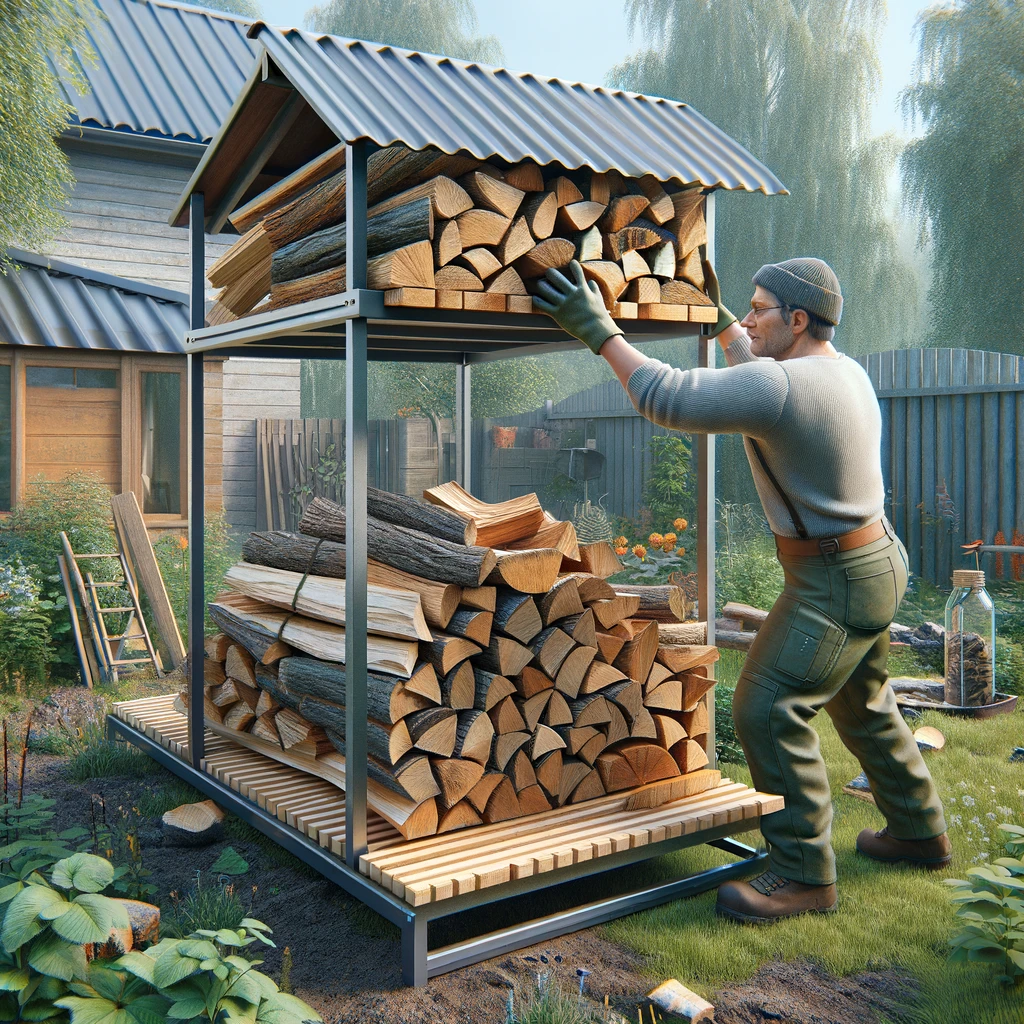
Burning firewood is a common practice during the cold winter months. However, storing firewood can attract pests, which can lead to infestations in your home. To prevent this, it's crucial to take effective measures to keep pests away from your firewood. In this comprehensive guide, we will discuss common pests, natural ways to prevent them, and proper storage techniques. By following these tips, you can ensure that your firewood remains pest-free and ready to use.
Pests can easily infest firewood, making it essential to identify and prevent them. Here are some common household pests that you may encounter when storing firewood:
Termites: These wood-destroying insects can cause significant damage to your firewood and even your home. To prevent termite infestations, keep your firewood elevated and away from your home's foundation.
Carpenter ants: These ants are attracted to damp and decaying wood. To prevent carpenter ant infestations, make sure your firewood is dry and well-ventilated.
Wood-boring beetles: These beetles lay their eggs in firewood. Once the larvae hatch, they feed on the wood, causing structural damage. Regularly inspect your firewood for signs of wood-boring beetles and remove any affected pieces.
If you prefer to avoid chemical solutions, there are several natural methods you can use to keep pests away from your firewood:

Proper storage is key to preventing pest infestations in your firewood. Here are some essential techniques to keep in mind:
Now that you are aware of the common pests that can infest firewood and the preventive measures you can take, let's delve deeper into the fascinating world of these pests and their impact on firewood storage.
Termites, for instance, are not just a nuisance when it comes to firewood. They are known as silent destroyers, capable of causing extensive damage to wooden structures. These tiny insects feed on cellulose, the main component of wood, and can chew through it relentlessly. By keeping your firewood elevated and away from your home's foundation, you are not only protecting your firewood but also safeguarding your entire property from potential termite infestations.
Did you know that carpenter ants are not just attracted to damp and decaying wood, but they also have a unique ability to excavate galleries within it? These ants create intricate networks of tunnels, which can weaken the structural integrity of the wood. By ensuring that your firewood is dry and well-ventilated, you are effectively deterring carpenter ants from making your firewood their new home.
Wood-boring beetles, on the other hand, have a life cycle that begins with the laying of eggs in firewood. The larvae that hatch from these eggs then proceed to feed on the wood, causing significant damage over time. By regularly inspecting your firewood for signs of wood-boring beetles and promptly removing any affected pieces, you are taking proactive steps to preserve the quality and longevity of your firewood.
Now, let's explore some additional natural methods you can use to keep pests away from your firewood. Removing debris from the area around your firewood storage space not only eliminates potential hiding spots for pests but also contributes to a cleaner and more organized environment. It's a win-win situation!
Essential oils have long been used for their aromatic and repellent properties. By spraying a mixture of essential oils such as peppermint, lavender, or cedarwood around your firewood pile, you are creating an olfactory barrier that pests find highly unpleasant. Not only will your firewood be protected, but it will also emit a pleasant scent that adds to the overall ambiance of your outdoor space.
Another natural method to consider is the application of diatomaceous earth. This fine powder, derived from fossilized remains of diatoms, has remarkable insecticidal properties. By spreading a thin layer of food-grade diatomaceous earth around the firewood pile, you are effectively dehydrating and killing insects that come into contact with it. It's a safe and environmentally friendly solution to keep pests at bay.
Lastly, let's talk about the proper storage techniques that can make a significant difference in preventing pest infestations in your firewood. Elevating the wood at least 18 inches off the ground not only deters pests from accessing it but also helps to keep the firewood dry by allowing air circulation underneath. By avoiding direct contact with the ground and using moisture-resistant barriers such as pallets or a tarp, you are effectively minimizing the risk of moisture buildup, which can attract pests and accelerate wood decay.
Stacking your firewood loosely is another crucial technique to keep in mind. This allows for proper airflow, reducing the chances of pests nesting inside the stack. Additionally, it makes it easier to inspect the firewood regularly for any signs of infestation, ensuring prompt action can be taken if necessary.
Lastly, storing your firewood away from your home is a wise decision. By positioning the firewood pile at least 30 feet away from your house, you are creating a buffer zone that minimizes the risk of pests migrating indoors. It's a simple yet effective measure to protect your home and maintain a pest-free environment.
By following these comprehensive guidelines, you can ensure that your firewood remains pest-free and ready to provide warmth and comfort during those chilly winter nights. Remember, prevention is key when it comes to pest control, and a little extra effort in firewood storage can go a long way in maintaining a pest-free home.

Storing firewood indoors may seem convenient, especially during harsh weather conditions. However, it comes with its own set of risks. Let's explore some important considerations:
While having firewood readily available indoors can be convenient for quick access during cold winter nights, it's crucial to understand the potential drawbacks associated with indoor firewood storage. By taking certain precautions and understanding the risks involved, you can effectively manage your firewood supply while safeguarding your home environment.
If you choose to store firewood indoors, follow these tips to minimize the risks:
Additionally, consider investing in a moisture meter to ensure the firewood's moisture content is below 20%. This will help prevent mold and fungi growth, keeping your indoor air quality safe and your firewood in optimal burning condition. Properly stacking the firewood off the ground and away from walls can also aid in ventilation and reduce the likelihood of pest infestations.
Storing firewood indoors can lead to the following risks:
By understanding these risks and implementing proper storage techniques, you can enjoy the warmth and ambiance of a crackling fire while minimizing the potential drawbacks of storing firewood indoors.
Pests can be a year-round nuisance. To effectively manage pests, it's important to implement strategies for each season. From sealing entry points in spring to removing food sources in summer, Critter Stop offers comprehensive pest control strategies for all seasons.
By following these effective ways to prevent pests in your firewood, you can ensure a cozy, pest-free winter season. Take the necessary steps to identify and prevent common household pests, explore natural pest repellents, and employ proper firewood storage techniques. Whether you choose to store firewood indoors or outdoors, understanding the associated risks and taking necessary precautions are vital.